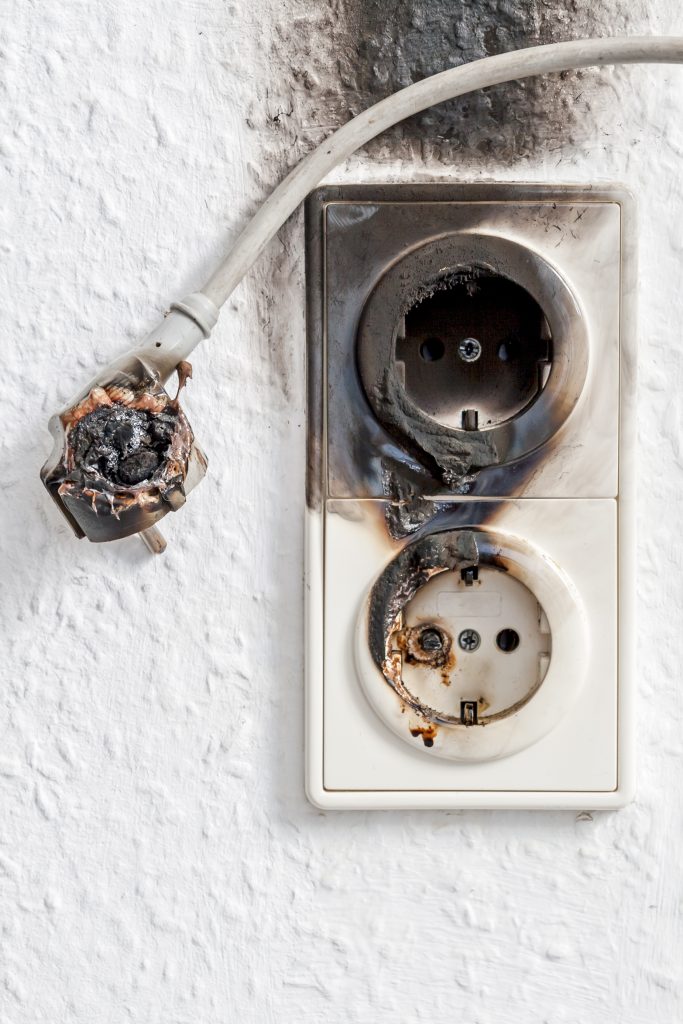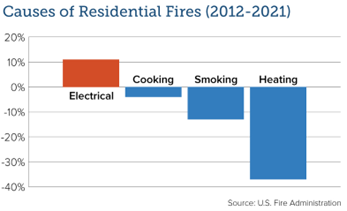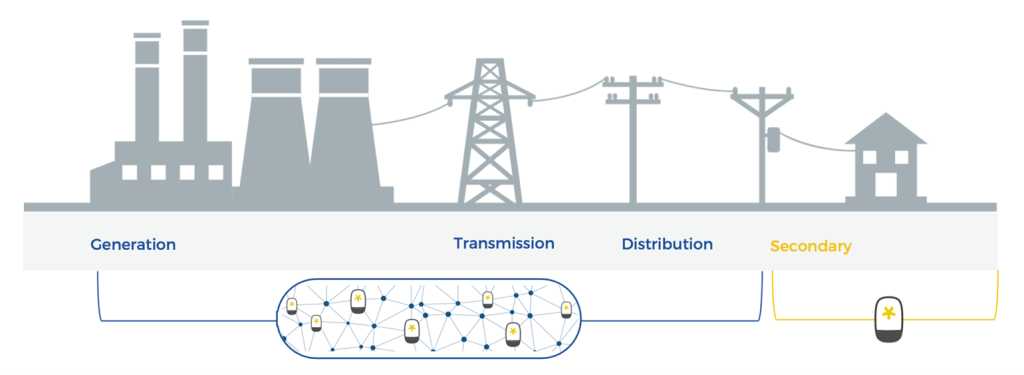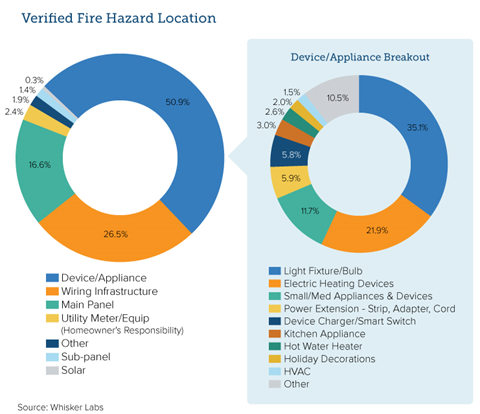Predict & Prevent: From Data to Practical Insight

By Bob Marshall, co-founder and CEO, Whisker Labs
The insurance industry’s shift from assessing and pricing risks to predicting and preventing losses – thereby improving insurance availability and affordability – is well underway. Even a casual look at the trade press reveals insurers adopting technologies and data-driven strategies that help businesses, families, and communities improve their risk profiles.
This data-driven movement does more than simply contain insurance costs – it’s driving improved customer engagement, affinity, and retention and creating opportunities beyond the transactional. Data clarity is crucial for all stakeholders, from insurers to first responders utilities, policymakers and – most important – homeowners. Accurate data enables proactive measures that can prevent fires from happening.
We’re seeing this with our insurance IoT offering, Ting. Ting prevents home fires by identifying unique signals generated by tiny electrical arcs, the precursors to imminent fire risks. These signals are incredibly small but are clearly visible to Ting’s advanced detection technology. Ting has been found to prevent 80 percent of home electrical fires – and, beyond its ability to predict and prevent, we have found that Ting holds even greater significance for organizations that want to bring greater clarity and value to their current data ecosystems.
Over the past few years, we’ve built the world’s most knowledgeable electrical fire prevention team, which has been instrumental in the evolution of Ting’s machine learning and AI. Our Fire Safety Team has found that existing electrical fire data, while helpful and directional, needs greater accuracy and completeness. This is not due to a lack of care. We’re talking about an exceptionally hard problem – codifying fires after the fact. It is at this critical point where data from IoT devices like Ting becomes indispensable.
More than 50 percent of insurance claims for fire are often coded in the “unknown/underdetermined” category. Of these, fire chiefs and forensic fire engineers suggest more than half are likely electrical-related, but lack of resources prevent them from determining exact causation beyond a reasonable doubt, so they simply default to “unknown.” Ting data continues to document important and first of its kind findings around the origin of electrical fires.
Our ‘why’ behind predict and prevent
A horrific loss from an electrical fire in my family prompted the question: “Why can’t faults be identified well before they can evolve into a fire?”

Electricity is one of the most dangerous forces in nature, yet one of our most critical resources; our growing reliance poses increasing risks to homes, businesses, and communities. Recent U.S. Fire Administration data reveals a sobering trend. The 10 years from 2012 through 2021 saw reduced cooking, smoking, and heating fires; however, in stark contrast, electrical fires saw an 11 percent increase over that same period. Fire ignitions with an undetermined cause increased equally by 11 percent.
Our pursuit to address these trends has brought us and our insurance partners here: Nearly 400,000 home-years of data, 6,000 remediated hazards; an insurance-forward IoT and telematics platform with full turnkey delivery; and most notably, hundreds of thousands of customers thrilled that their insurance company is doing more for them than reactively paying claims.
Beyond the home’s walls
But Ting’s value is not limited to inside the home. While every Ting sensor is monitoring each home’s electrical activity to help predict and prevent fires, collectively the Ting network is aggregating data from across the broader utility grid. Specifically, it can help predict and prevent faults on the grid, enabling operators to proactively address risks that might otherwise lead to catastrophic, loss-generating events like wildfires.

Data drives insights
Given that many electrical-related fires are coded not as electrical but as “unknown” in fire incident databases, we’ve learned that comparing “prevented fires” to claims after a fire must consider a broader set of fire claims across a book of business, not just those with a secondary cause of “electrical.” All unknown fires and any claim that could even be electrical-related should be included in the broader set of claims. Excluding claims that can reasonably and accurately be removed — such as arson, lightning, earthquakes, and wildfire-related home fires — the data reveals a one-third reduction in the broader category of fires across the “Ting cohort” versus the “non-Ting cohort.” This results in a strong ROI for insurers.
Beyond prevention metrics, we’ve learned a lot, and Ting continues to learn daily and provide statistically significant actuarial impacts. With fully documented and mitigated hazards identified in 1 in 68 homes, the cases – or “saves” – are documented in detail in a peer-reviewed whitepaper, the latest version published on June 1, 2023. By design, each identified and remediated hazard is carefully reported through a highly standardized process to ensure high-quality, consistent data.
Upon analyzing this statistically significant data, a recurring theme surfaced: The longstanding perception of the electrical fire problem requires new thinking. Below, I highlight three surprising, objective observations revealed by Ting data that support this notion:

There is a common misconception that electrical fires are largely due to older home wiring infrastructure. Yet, we have found that 50 percent of home electrical fire hazards stem from failing or defective devices and appliances, with the other half attributed to home wiring and outlets. This finding is reflected in the chart below, breaking down the location and types of home electrical fire hazards, with a breakout of those stemming from devices and appliances.What may seem more surprising is that the electric utility grid can be a significant fire risk factor inside the home – not just a community fire risk. Nearly 50 percent of all hazard cases trace back to a root cause outside the house in the form of a grid equipment fault. These faults result in dangerous power entering the home. These conditions endanger a home and its occupants and can cause a shock hazard, damage equipment, and sensitive electronics, and worse, ignite a fire. Utility repair crews often share that a hazard impacted multiple homes in the immediate area, not just the home protected by Ting.One last finding that runs counter to conventional thinking about electrical fire risk comes in the form of a home-age “bias.” Logically, most of us assume the older the home, the higher the risk. In general, this holds when considering the effects of age and use on existing wiring infrastructure – all other things being equal. However, this assumption falls apart when considering all other factors, such as materials, build quality, and the standards and codes at that time. In fact, with the prevention data that flows in each day from our Fire Safety Team, we have built predictive models for home fire risk; early indications are that these models are demonstrating skill and will lead to a better, more informed view of risk – and of course – even better prevention.
I’m amazed at how our initial objective preventing residential fires has evolved to take on such a broad scope. New data spawns new thinking and new opportunities. Objective data is essential to validating the efficacy of any initiative seeking to prevent losses. Predicting and preventing fires is in the interest of all – especially homeowners and their families.





